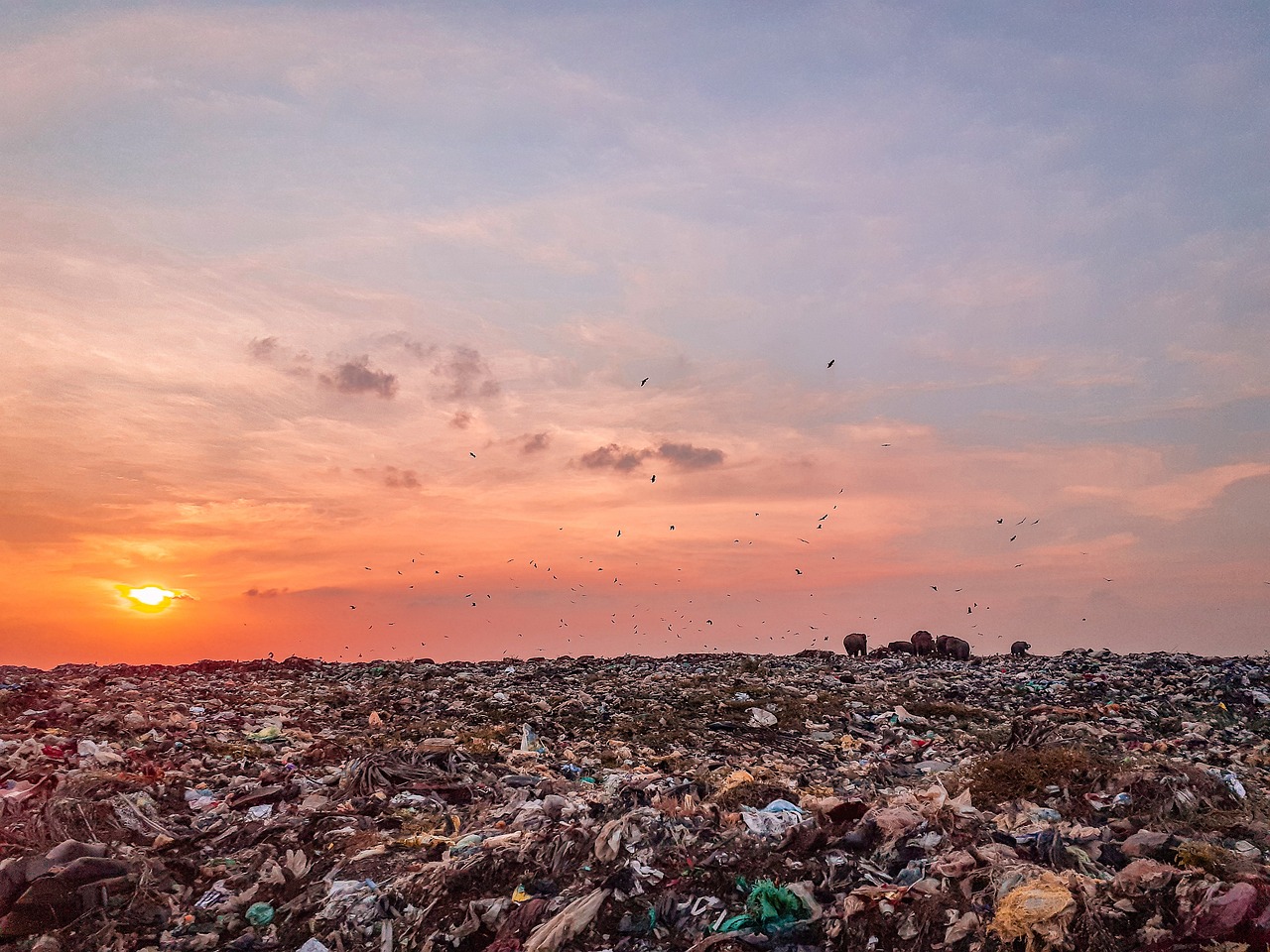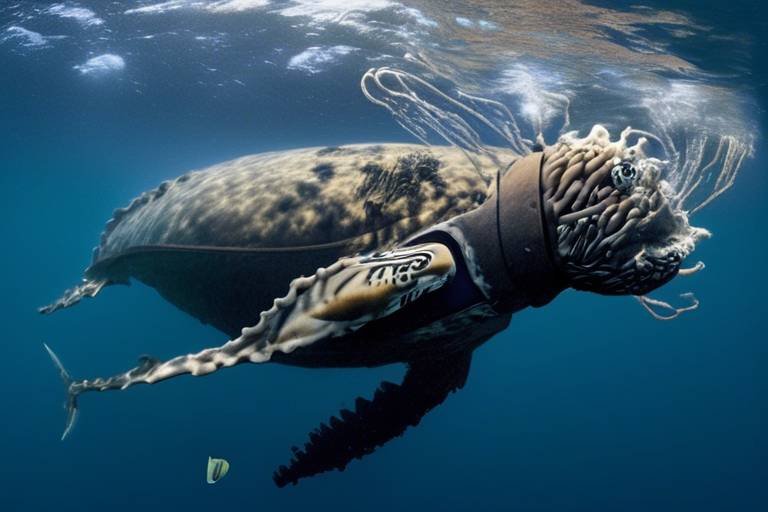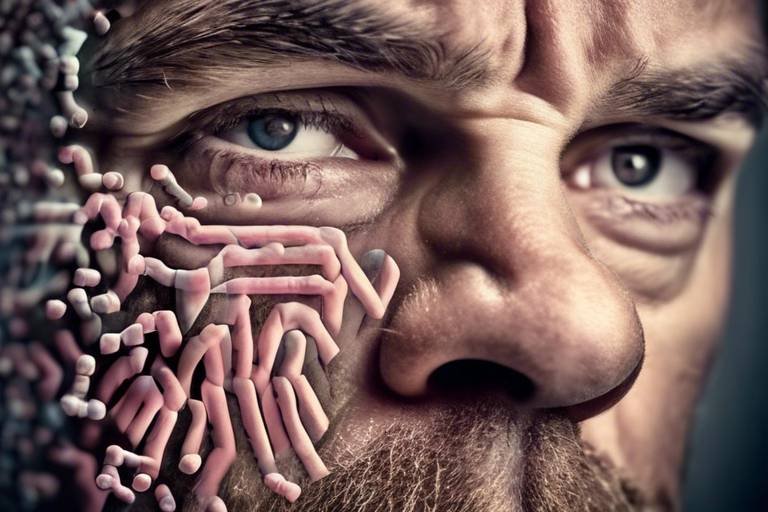How Microplastics are Affecting Human Health - New Research
The issue of microplastics has taken center stage in environmental discussions, and it's not just about the oceans anymore. Recent research has unveiled startling connections between these tiny particles and human health. Microplastics, defined as plastic pieces smaller than 5mm, are not just a threat to marine life; they have found their way into our air, food, and water, raising serious concerns about their impact on our well-being. So, what exactly are microplastics, and why should we be worried? Let’s dive deeper into this alarming topic.
Microplastics are tiny plastic particles that originate from various sources, including the degradation of larger plastic items and the shedding of synthetic fibers from textiles. They are pervasive in our environment, showing up in the most unexpected places. From the depths of the ocean to the peaks of the Himalayas, microplastics have infiltrated ecosystems globally. These particles can be categorized into two main types: primary microplastics, which are manufactured at a small size for specific applications (like microbeads in cosmetics), and secondary microplastics, which result from the breakdown of larger plastic debris. The **prevalence** of microplastics is alarming, with estimates suggesting that millions of tons are released into the environment each year.
Identifying the primary sources of microplastics is crucial for understanding their impact on health and the environment. Common contributors include:
- Plastic Waste: Single-use plastics, such as bags and bottles, break down into smaller particles over time.
- Textile Fibers: Washing synthetic clothing releases thousands of microfibers into wastewater.
- Personal Care Products: Many cosmetic products contain microbeads that wash down the drain and enter water systems.
These sources highlight the **urgent need** for better waste management and consumer awareness to help reduce microplastic pollution.
One of the most concerning aspects of microplastics is their infiltration into our food and drinking water supplies. Recent studies have shown that microplastics can enter the food chain through various routes, such as:
- Fish and seafood consuming microplastics in their habitats.
- Contamination of crops through polluted water sources.
As we consume these contaminated food items, we inevitably ingest microplastics, raising questions about the potential health risks associated with their consumption. The implications of this contamination are still being studied, but the prospect of ingesting plastic particles is unsettling.
Ingesting microplastics raises significant concerns about human health. Several studies have begun to link microplastic exposure to various health issues. For instance, researchers have found connections between microplastics and:
- Inflammation: Microplastics may trigger inflammatory responses in the body.
- Toxic Chemical Exposure: Microplastics can absorb harmful chemicals from the environment, which may then be released into the body upon ingestion.
These findings underscore the need for further research to fully understand the health implications of microplastics.
Recent research suggests that microplastics may also impact gut health. Studies indicate that these particles can alter gut microbiota, potentially leading to digestive disorders. When microplastics enter the gastrointestinal tract, they can disrupt the balance of beneficial bacteria, which plays a vital role in our overall health. Imagine your gut as a bustling city; when microplastics invade, it's like introducing chaos into a well-ordered system. This disruption can lead to a range of health issues, from bloating to more severe gastrointestinal diseases.
Airborne microplastics pose additional health risks that are often overlooked. These particles can become airborne through various means, including the breakdown of larger plastic debris and the shedding of fibers from textiles. Once in the air, they can be inhaled, leading to potential respiratory issues. Studies have shown that inhaling microplastics can cause inflammation and other respiratory problems, further complicating the health risks associated with these particles.
Recent studies have shed light on the effects of microplastics on human health. Key findings indicate that exposure to microplastics is more widespread than previously thought, with implications for both physical and mental health. The need for further investigation into the long-term impacts is evident, as researchers continue to uncover the multifaceted ways in which microplastics affect our bodies.
Analyzing specific case studies provides insight into microplastics' effects on human health. For example, a study conducted in a coastal community found that residents had elevated levels of microplastics in their blood, correlating with reported health issues such as respiratory problems and gastrointestinal distress. These documented instances of exposure are alarming and highlight the urgent need for action.
Future research is essential to fully understand the health implications of microplastics. Potential areas for further investigation include:
- Long-term studies to track the cumulative effects of microplastic exposure.
- Development of mitigation strategies to reduce microplastic pollution at the source.
As we continue to uncover the mysteries of microplastics, it becomes increasingly clear that addressing this issue is vital for safeguarding our health and the environment.
- What are microplastics? Microplastics are tiny plastic particles less than 5mm in size, originating from the breakdown of larger plastics or manufactured for specific uses.
- How do microplastics affect human health? Ingesting or inhaling microplastics can lead to inflammation, toxic chemical exposure, and potential disruption of gut health.
- What can be done to reduce microplastic pollution? Reducing plastic waste, improving waste management, and raising consumer awareness can help mitigate microplastic pollution.

Understanding Microplastics
Microplastics are defined as tiny plastic particles that measure less than 5 millimeters in diameter. They are often invisible to the naked eye, yet their presence is increasingly felt in our environment. These minuscule particles originate from various sources, including the breakdown of larger plastic items, such as bottles and bags, or from the shedding of synthetic fibers from textiles during washing. It's astonishing to think that something so small can have such a large impact on our world.
The journey of microplastics begins with the **disintegration** of larger plastic waste in our oceans, rivers, and landfills. Over time, exposure to sunlight, wind, and water causes these plastics to fragment into smaller pieces. Additionally, microplastics can also be produced intentionally, such as in the case of microbeads found in some personal care products, like exfoliating scrubs and toothpaste. This means that microplastics are not just an environmental nuisance; they are a byproduct of our daily lives and consumption habits.
As we delve deeper into the prevalence of microplastics, it becomes clear that they are ubiquitous in our surroundings. They have been discovered in various ecosystems, from the deepest ocean trenches to the highest mountain peaks. In fact, a recent study showed that microplastics were found in 90% of the bottled water tested worldwide. This alarming statistic raises questions about how these particles are infiltrating our lives and what that means for our health.
To better understand the scale of the microplastics issue, consider the following sources that contribute to their prevalence:
- Plastic Waste: The breakdown of discarded plastic items is a significant source of microplastics.
- Textile Fibers: Washing synthetic fabrics releases tiny fibers into wastewater systems.
- Personal Care Products: Products containing microbeads contribute directly to microplastic pollution.
In summary, understanding microplastics is crucial as they represent a significant environmental challenge that is intricately linked to human health. By recognizing their sources and prevalence, we can begin to address the broader implications of their existence. The more we learn about microplastics, the more we realize that they are not just a distant environmental issue; they are a pressing concern that affects us all.

Sources of Microplastics
Microplastics are everywhere, and understanding their sources is crucial in tackling this pervasive issue. These tiny plastic particles, which are less than 5mm in size, originate from a variety of everyday products and activities. One of the primary contributors to microplastics is plastic waste. When larger plastic items like bottles, bags, and containers break down due to environmental factors such as sunlight and weathering, they fragment into smaller particles that can easily infiltrate our ecosystems.
Another significant source of microplastics comes from textile fibers. When we wash synthetic fabrics like polyester, nylon, and acrylic, tiny fibers are released into the water. Did you know that a single load of laundry can release thousands of these microfibers? These fibers then make their way into rivers, lakes, and oceans, contributing to the contamination of marine life and, ultimately, our food chain.
Additionally, many personal care products contain microplastics as well. Items such as exfoliating scrubs, toothpaste, and certain cosmetics often include tiny plastic beads that are designed to enhance their texture and effectiveness. Unfortunately, these microplastics are washed down the drain and can pass through wastewater treatment plants, ending up in our waterways.
To give you a clearer picture, here’s a table summarizing the main sources of microplastics:
| Source | Description |
|---|---|
| Plastic Waste | Decomposing larger plastic items that break down into smaller particles. |
| Textile Fibers | Microfibers released from washing synthetic fabrics. |
| Personal Care Products | Microbeads found in scrubs, toothpaste, and cosmetics. |
Moreover, the industrial processes that manufacture plastic products also contribute to microplastic pollution. During the production and transportation of plastic materials, small plastic pellets, known as nurdles, can spill into the environment. These nurdles are often found in marine environments, where they pose risks to wildlife and ecosystems.
In conclusion, microplastics are a byproduct of our modern lifestyle, stemming from various sources that we often overlook. Being aware of these sources not only helps us understand the problem better but also empowers us to take action. By reducing our plastic consumption, opting for natural fibers, and choosing personal care products without microbeads, we can collectively work towards minimizing the release of these harmful particles into our environment.

Microplastics in Food and Water
When you sit down for a meal or pour yourself a glass of water, have you ever considered what might be lurking in your food and drink? It’s a startling thought, but microplastics have infiltrated our daily sustenance in ways that many of us are unaware of. These tiny plastic particles, measuring less than 5mm, can originate from a variety of sources and make their way into our food and water supply through several pathways. From the seafood we consume to the water we drink, microplastics are proving to be an alarming presence.
So, how do these particles get into our food and water? Well, it starts with the environment. Microplastics can break off from larger plastic debris in oceans, lakes, and rivers. They can also be released from the breakdown of synthetic fibers from clothing during washing. Once these microplastics enter our water systems, they can be ingested by marine life. For instance, fish and shellfish may consume these particles, and when we eat them, we inadvertently introduce microplastics into our bodies. It's like a game of *pass the parcel*, but with something harmful inside!
Moreover, the situation isn't just limited to sea life. Microplastics have been detected in various food products, including honey, salt, and even fruits and vegetables. This widespread contamination raises significant concerns about our health. The World Health Organization has acknowledged that while the exact health effects of consuming microplastics are still being studied, there are potential risks that cannot be ignored. The ingestion of microplastics can lead to the accumulation of toxic chemicals in our bodies, which may disrupt our endocrine systems and lead to various health issues.
To illustrate the extent of this contamination, consider the following table that summarizes some common food items and the presence of microplastics:
| Food Item | Microplastics Detected |
|---|---|
| Seafood (fish and shellfish) | Yes |
| Table Salt | Yes |
| Honey | Yes |
| Fruits and Vegetables | Yes |
As we delve deeper into this issue, it becomes clear that the microplastics crisis isn't just an environmental concern; it's a public health crisis that affects us all. The implications of consuming microplastics are still being explored, but researchers are increasingly concerned about their potential to cause inflammation, disrupt hormones, and even lead to chronic diseases. The question remains: how can we mitigate these risks? While the solutions may not be straightforward, being aware of where our food comes from and advocating for cleaner environments can be crucial steps toward reducing our exposure.
In conclusion, the presence of microplastics in our food and water supplies is a complex issue that requires urgent attention. As consumers, we must stay informed and proactive about the sources of our food and the potential contaminants that may be present. After all, knowledge is power, and understanding the implications of microplastics can help us make healthier choices for ourselves and future generations.
- What are microplastics? Microplastics are small plastic particles less than 5mm in size that originate from various sources, including the breakdown of larger plastic items.
- How do microplastics enter our food supply? They can enter our food supply through environmental contamination, particularly from marine life that consumes these particles.
- Are microplastics harmful to human health? While research is ongoing, there are concerns that ingesting microplastics can lead to health issues, including inflammation and exposure to toxic chemicals.
- What can I do to reduce my exposure to microplastics? You can reduce your exposure by choosing natural fibers, avoiding single-use plastics, and being mindful of where your food comes from.

Health Risks of Ingesting Microplastics
Ingesting microplastics is becoming a growing concern for health professionals and researchers alike. These tiny particles, often less than 5mm in size, can easily find their way into our food and drinking water, leading to potential health risks that we are only beginning to understand. Imagine swallowing a tiny piece of plastic every time you take a sip of water or enjoy a meal—it's unsettling, isn't it? The reality is that microplastics have infiltrated our food chain, and the implications for human health are alarming.
Studies have suggested that microplastics can cause a range of health issues, primarily due to their ability to carry toxic chemicals. These chemicals can leach into our bodies, leading to various health concerns, including:
- Inflammation: Research indicates that microplastics can trigger inflammatory responses in the body. This inflammation can contribute to chronic health conditions, including heart disease and autoimmune disorders.
- Toxic Chemical Exposure: Microplastics can absorb harmful pollutants from the environment, such as pesticides and heavy metals. When ingested, these toxins can enter the bloodstream and potentially harm organs.
- Endocrine Disruption: Some studies suggest that microplastics might interfere with hormonal systems, leading to reproductive issues and developmental problems in children.
Furthermore, the long-term effects of microplastic ingestion are still largely unknown. As these particles accumulate in our bodies over time, the potential for chronic health issues increases. For instance, a recent study found that individuals consuming seafood—known to be a significant source of microplastics—had higher levels of these particles in their digestive systems. This raises critical questions about how microplastics might affect our gut health and overall well-being.
To put this into perspective, consider the analogy of a sponge absorbing water. Just as a sponge soaks up liquid, our bodies can absorb these microplastics and the toxic chemicals they carry. The more we consume, the more we risk saturating our systems with harmful substances. It's a vicious cycle that calls for urgent attention and action.
As we delve deeper into the research, it's clear that understanding the health risks associated with ingesting microplastics is essential. The need for comprehensive studies that explore the long-term effects and potential mitigation strategies is more pressing than ever. With growing awareness and concern, we can begin to advocate for changes that might reduce our exposure to these harmful particles.
- What are microplastics? Microplastics are tiny plastic particles less than 5mm in size that originate from various sources, including the breakdown of larger plastic items and synthetic textiles.
- How do microplastics enter the human body? Microplastics can enter the human body through contaminated food and water, as well as through inhalation of airborne particles.
- What health risks are associated with microplastics? Ingesting microplastics may lead to inflammation, toxic chemical exposure, and endocrine disruption, among other health issues.
- How can we reduce our exposure to microplastics? Reducing plastic use, choosing natural fibers over synthetic ones, and filtering drinking water can help minimize exposure to microplastics.

Microplastics and Gut Health
Recent research has sparked a wave of concern regarding the impact of microplastics on our gut health. Imagine tiny plastic particles, often invisible to the naked eye, infiltrating your digestive system. It’s a disconcerting thought, isn’t it? These microplastics can alter the delicate balance of our gut microbiota, the community of microorganisms that play a crucial role in our overall health. When this balance is disrupted, it can lead to a variety of digestive disorders.
Studies suggest that microplastics may act as carriers for harmful substances, including bacteria and toxic chemicals. When ingested, these particles can provoke an inflammatory response in the gut, potentially leading to conditions such as irritable bowel syndrome (IBS) or even more severe gastrointestinal diseases. The gut is often referred to as our "second brain" due to its profound influence on our mood and overall well-being. So, if microplastics are wreaking havoc in our gut, the implications could extend far beyond just digestive issues.
Moreover, the interaction between microplastics and gut microbiota is an area ripe for exploration. Research indicates that these particles can disrupt the natural composition of gut bacteria, which may lead to dysbiosis—a condition where harmful bacteria outnumber the beneficial ones. This imbalance can result in a range of health problems, from obesity to autoimmune diseases. To illustrate, consider the gut microbiota as a symphony orchestra; if one instrument is out of tune, the entire performance can suffer. Similarly, the presence of microplastics can lead to a discordant gut environment.
As we delve deeper into this issue, it's essential to recognize the sources of microplastics that end up in our food chain. They can originate from various sources, including:
- Food packaging materials
- Processed foods
- Contaminated water sources
These microplastics can easily be ingested through everyday foods and beverages, often without our knowledge. The question arises: what can we do to mitigate this risk? Increasing awareness about the sources of microplastics and advocating for sustainable practices can help reduce their prevalence in our diets. Additionally, opting for fresh, unpackaged foods can significantly lower the chances of microplastic ingestion.
In conclusion, while the research is still in its early stages, the evidence linking microplastics to gut health issues is compelling. As more studies emerge, it becomes increasingly clear that we must take this issue seriously. Protecting our gut health is essential for our overall well-being, and understanding the role of microplastics is a vital step in that direction.
- What are microplastics? Microplastics are small plastic particles less than 5mm in size that originate from various sources, including the breakdown of larger plastic items.
- How do microplastics affect gut health? Microplastics can disrupt gut microbiota balance, leading to digestive disorders and inflammation.
- Can I avoid microplastics in my diet? Yes, by choosing fresh, unpackaged foods and being mindful of plastic packaging, you can reduce your exposure to microplastics.
- What are the long-term health effects of microplastics? Research is ongoing, but potential long-term effects include chronic inflammation, digestive disorders, and other health complications.

Microplastics in the Air
When we think about pollution, our minds often drift towards smoke and fumes, but what if I told you that tiny bits of plastic are floating around in the air we breathe? Microplastics are not just confined to oceans and landfills; they have infiltrated our atmosphere too. These minuscule particles, measuring less than 5mm, can originate from various sources, including the breakdown of larger plastic items, tire wear, and even the shedding of synthetic fibers from our clothes. Can you imagine inhaling something that was once part of a plastic bottle or a polyester shirt? It sounds surreal, but it’s a reality many of us face today.
Microplastics can become airborne through various mechanisms. For instance, when plastic waste is exposed to sunlight and weathering, it breaks down into smaller fragments. These fragments can then be lifted into the air by wind or human activities, such as construction and industrial processes. Interestingly, urban areas tend to have higher concentrations of airborne microplastics due to increased human activity and pollution. Recent studies have shown that the average urban resident may be inhaling thousands of microplastic particles each year. That’s a staggering thought!
But why should we be concerned about these airborne particles? The implications for our respiratory health are alarming. When inhaled, microplastics can enter our lungs and potentially cause a range of health issues. Current research suggests that these particles can lead to inflammation and even exacerbate existing respiratory conditions such as asthma and chronic obstructive pulmonary disease (COPD). Imagine the tiny plastic particles lodging themselves in your lungs, causing irritation and long-term health issues. It’s enough to make anyone pause and think about the air quality in their environment.
Furthermore, the impact of microplastics in the air isn’t just limited to respiratory health. Studies are beginning to explore how these particles may affect our overall well-being. For instance, there’s a growing concern that microplastics could enter the bloodstream through the lungs and potentially affect other organs. While research is still in its early stages, the potential for systemic health effects is a cause for concern.
So, how can we combat this invisible threat? Awareness is the first step. By understanding the sources of microplastics and their potential health risks, we can take action to reduce our exposure. Here are a few strategies that individuals and communities can adopt:
- Reduce the use of single-use plastics.
- Support policies aimed at reducing plastic production.
- Advocate for better air quality regulations.
- Participate in local clean-up efforts to minimize plastic waste.
In conclusion, the presence of microplastics in the air is a growing concern that warrants our attention. As we continue to uncover the health implications of these tiny particles, it becomes increasingly clear that we need to address this issue head-on. By taking conscious steps to reduce plastic use and advocating for cleaner air, we can protect our health and the environment for future generations.
1. What are microplastics?
Microplastics are tiny plastic particles less than 5mm in size that originate from the breakdown of larger plastic items or from products like cosmetics and textiles.
2. How do microplastics enter the air?
Microplastics can become airborne through wind, human activities, and the breakdown of larger plastic waste exposed to sunlight and weathering.
3. What health risks are associated with inhaling microplastics?
Inhaling microplastics may lead to respiratory issues, inflammation, and potentially other systemic health effects as they can enter the bloodstream.
4. How can we reduce our exposure to airborne microplastics?
Reducing single-use plastics, supporting policies for plastic reduction, and advocating for better air quality are effective ways to minimize exposure.

Current Research Findings
Recent studies have begun to unravel the complexities surrounding the effects of microplastics on human health. The findings are both alarming and eye-opening, revealing a world where tiny plastic particles have infiltrated our lives in ways we never imagined. For instance, a groundbreaking study published in a leading environmental journal highlighted that microplastics have been detected in human blood for the first time, raising significant concerns about their potential health implications. These particles, measuring less than 5mm, can enter the bloodstream and travel throughout the body, potentially leading to unforeseen health risks.
Moreover, researchers have identified various pathways through which microplastics enter the human body. They can be ingested through contaminated food and water or inhaled via airborne particles. The implications of these findings are profound. As we continue to consume products that may contain microplastics, the question arises: how do these particles affect our health over time?
One particularly striking study conducted on marine life found that microplastics can accumulate toxic chemicals, which then transfer to organisms higher up the food chain, including humans. This raises concerns about the bioaccumulation of harmful substances, leading to potential long-term health issues. The table below summarizes some key research findings on microplastics and their health effects:
| Study | Findings | Health Implications |
|---|---|---|
| Study A | Microplastics found in human blood | Potential for systemic health issues |
| Study B | Microplastics in seafood | Risk of toxic chemical exposure |
| Study C | Airborne microplastics detected in urban areas | Respiratory health concerns |
Furthermore, the need for long-term studies is becoming increasingly apparent. Many researchers advocate for comprehensive investigations that track the health effects of microplastics over extended periods. This would help establish clearer connections between microplastics exposure and specific health outcomes, such as chronic diseases, inflammation, and even reproductive issues.
As we delve deeper into the research, it’s crucial to consider the implications of these findings on public health policies. Should we be advocating for stricter regulations on plastic production and waste management? The current landscape suggests that immediate action is necessary to mitigate the risks associated with microplastics.
In summary, the current body of research paints a concerning picture regarding microplastics and human health. While we are only beginning to understand the full extent of their impact, it is clear that these tiny particles pose significant risks. As more studies emerge, we must remain vigilant and proactive in addressing this growing environmental and health crisis.
- What are microplastics? Microplastics are tiny plastic particles less than 5mm in size, originating from various sources, including the degradation of larger plastic items.
- How do microplastics enter the human body? They can be ingested through contaminated food and water or inhaled as airborne particles.
- What are the health risks associated with microplastics? Potential health risks include inflammation, toxic chemical exposure, and possible long-term effects on gut and respiratory health.
- What can be done to reduce microplastic exposure? Reducing plastic use, advocating for better waste management, and supporting policies aimed at decreasing plastic production can help mitigate exposure.

Case Studies on Human Exposure
The issue of microplastics has become a pressing concern in recent years, especially as research unveils alarming data regarding their impact on human health. Case studies from various parts of the world provide valuable insights into how these microscopic particles infiltrate our lives and the potential health consequences they carry. For instance, a study conducted in Europe revealed that individuals consuming seafood were found to have microplastics in their bloodstreams. This study highlighted the alarming reality that microplastics are not just lingering in the environment but are actively entering our bodies through our diets.
Another noteworthy case study took place in the United States, where researchers examined the air quality in urban areas heavily populated with plastic manufacturing facilities. They discovered that residents living near these plants had significantly higher levels of airborne microplastics compared to those in rural settings. The implications are profound: as these particles become airborne, they can be inhaled, leading to potential respiratory issues. This raises the question—how many of us are unknowingly exposed to these harmful particles in our everyday environments?
Furthermore, a comprehensive study in Asia investigated the presence of microplastics in tap water. The findings were shocking—over 80% of samples tested contained microplastics, with the most common types being polyethylene and polypropylene. This situation underscores a critical concern: if our drinking water is contaminated, what does that mean for our health? The ingestion of microplastics through water could lead to a variety of health issues, particularly in vulnerable populations such as children and the elderly.
To better understand the scope of human exposure, researchers have begun to compile data from various studies into a cohesive overview. The following table summarizes some key findings from recent case studies regarding microplastics in human exposure:
| Study Location | Source of Exposure | Health Impact Observed |
|---|---|---|
| Europe | Seafood Consumption | Microplastics found in bloodstream |
| United States | Air Quality near Manufacturing | Increased respiratory issues |
| Asia | Tap Water | Potential long-term health risks |
These case studies not only highlight the prevalence of microplastics in our environment but also emphasize the urgent need for further research. As we continue to uncover the extent of human exposure, it is essential to consider the long-term effects of microplastics on our health. Are we prepared to confront the reality that our everyday choices may be contributing to a larger health crisis?
- What are microplastics? Microplastics are tiny plastic particles less than 5mm in size, originating from larger plastic waste or manufactured products.
- How do microplastics enter the human body? They can enter through ingestion of contaminated food and water or inhalation of airborne particles.
- What health risks are associated with microplastics? Potential risks include inflammation, toxic chemical exposure, and impacts on gut health.
- What can be done to reduce microplastic exposure? Reducing plastic use, supporting bans on single-use plastics, and advocating for better waste management can help.

Future Research Directions
As we delve deeper into the complex world of microplastics, it becomes increasingly clear that we are only scratching the surface of understanding their impact on human health. Future research is essential to fully grasp the long-term implications of microplastics exposure, and there are several key areas that warrant further investigation. First and foremost, we need to explore the biological effects of microplastics at a cellular level. This involves studying how these tiny particles interact with human cells and tissues, potentially leading to inflammation or other adverse reactions.
Moreover, researchers should focus on the toxicological profiles of microplastics. Many microplastics are not just plain plastic; they often carry harmful chemicals and pollutants that can leach into the body. Understanding the synergy between microplastics and these toxic substances is crucial for assessing health risks. For instance, how do these chemicals affect hormonal balance or contribute to chronic diseases? Addressing these questions will provide a clearer picture of the dangers posed by microplastics.
Another critical area for future research is the longitudinal studies that track health outcomes over time in populations exposed to microplastics. By observing these individuals over an extended period, we can gain valuable insights into how microplastics may contribute to the development of diseases such as cancer, respiratory issues, and gastrointestinal disorders. Such studies could also help identify vulnerable populations who are at a higher risk due to factors like age, pre-existing health conditions, or socioeconomic status.
Additionally, the development of mitigation strategies is essential. Future research should not only focus on understanding the problem but also on finding solutions. This could involve studying effective methods for reducing microplastic pollution at the source, such as improving waste management systems or innovating biodegradable alternatives. Furthermore, researchers could explore public health initiatives aimed at educating communities about the risks associated with microplastics and promoting safer consumption practices.
In summary, the future of microplastics research holds immense potential. By prioritizing studies on biological effects, toxicological profiles, long-term health impacts, and mitigation strategies, we can pave the way for a healthier future. It's not just about understanding the problem; it's about taking actionable steps to protect our health and the environment.
- What are microplastics? Microplastics are tiny plastic particles less than 5mm in size, originating from various sources, including the degradation of larger plastic items and synthetic fibers.
- How do microplastics enter the human body? Microplastics can enter the human body through ingestion of contaminated food and water, as well as inhalation of airborne particles.
- What health risks are associated with microplastics? Research suggests that microplastics may contribute to inflammation, toxic chemical exposure, and alterations in gut microbiota, potentially leading to various health issues.
- What can be done to reduce microplastic exposure? Reducing plastic waste, using natural fibers in clothing, and supporting policies aimed at minimizing plastic pollution are effective ways to mitigate exposure.
Frequently Asked Questions
- What are microplastics?
Microplastics are tiny plastic particles, typically less than 5mm in size, that originate from various sources such as plastic waste, textile fibers, and personal care products. They are pervasive in the environment and can be found in soil, water, and even the air we breathe.
- How do microplastics enter our food and water supply?
Microplastics can infiltrate our food and drinking water through several pathways. For instance, they can be washed into water bodies from landfills, enter the food chain via aquatic organisms, or be released from products during processing and consumption.
- What health risks are associated with ingesting microplastics?
Ingesting microplastics raises significant health concerns. Studies have linked them to inflammation, toxic chemical exposure, and potential disruption of gut health. The long-term effects are still being researched, but the initial findings suggest they could pose serious risks to human health.
- Can microplastics affect gut health?
Yes, recent research indicates that microplastics may alter gut microbiota, which can lead to digestive disorders. This alteration might affect nutrient absorption and overall gut health, highlighting the need for further studies in this area.
- How do microplastics become airborne?
Microplastics can become airborne through various means, such as wind erosion of contaminated soil, the release of particles during the washing of synthetic textiles, and even through the use of personal care products that contain microbeads. Once airborne, they can be inhaled, posing additional health risks.
- What are the current research findings on microplastics?
Recent studies have revealed concerning insights into the effects of microplastics on human health. They highlight the need for more comprehensive research to understand the long-term impacts and potential health risks associated with microplastic exposure.
- Are there any documented cases of human exposure to microplastics?
Yes, there have been documented case studies that illustrate the effects of microplastics on human health. These cases provide valuable insights into exposure levels and associated health outcomes, reinforcing the need for continued investigation.
- What future research directions are being considered regarding microplastics?
Future research will likely focus on long-term studies to better understand the health implications of microplastics. Additionally, researchers are exploring mitigation strategies to reduce exposure and the environmental impact of microplastics.



















